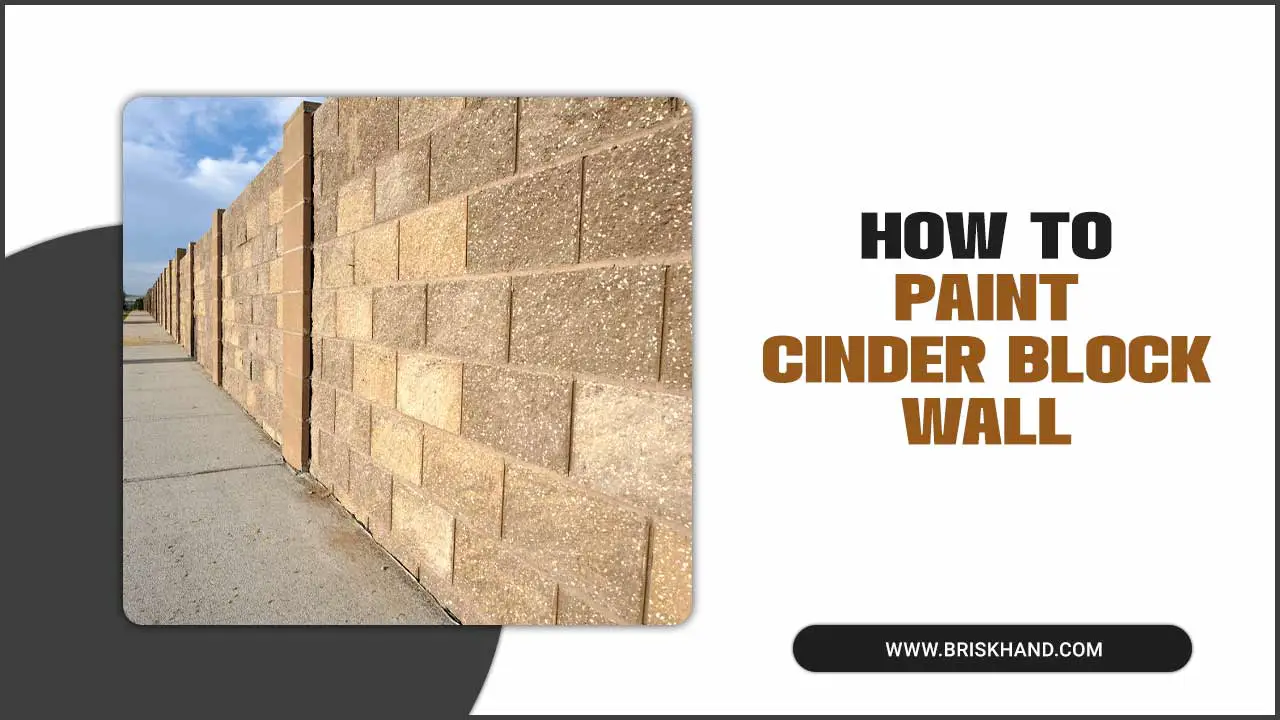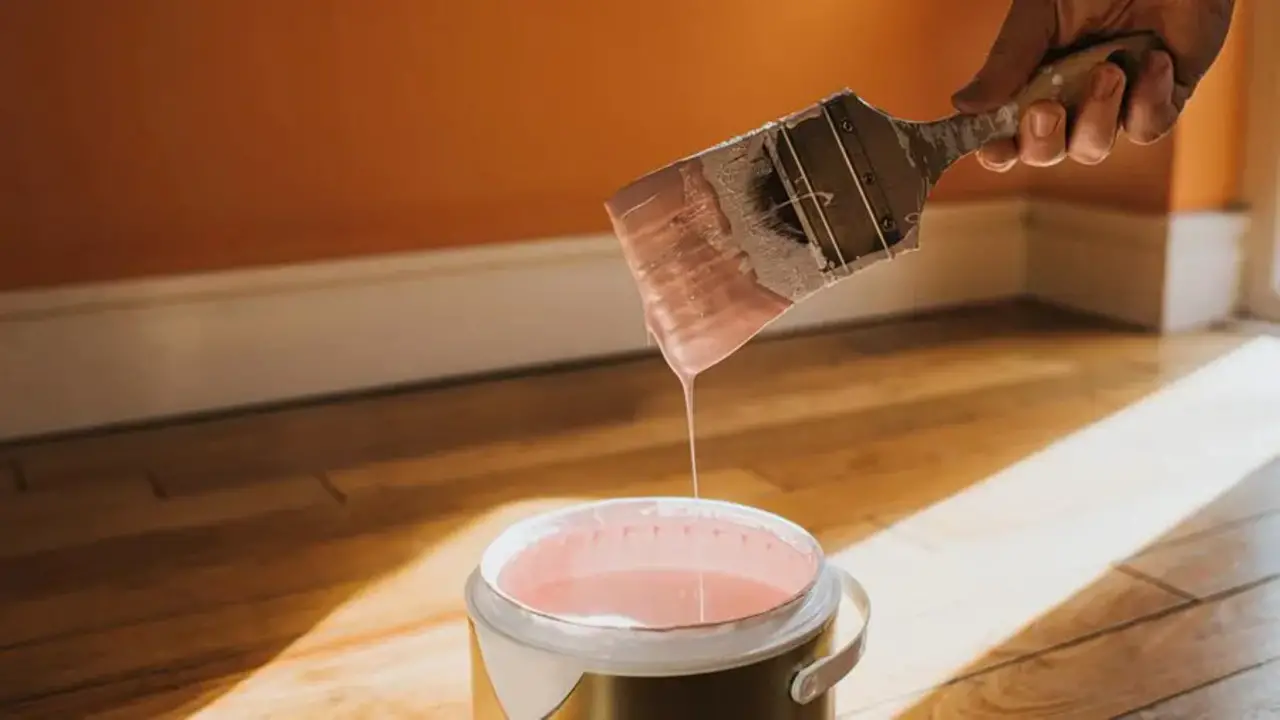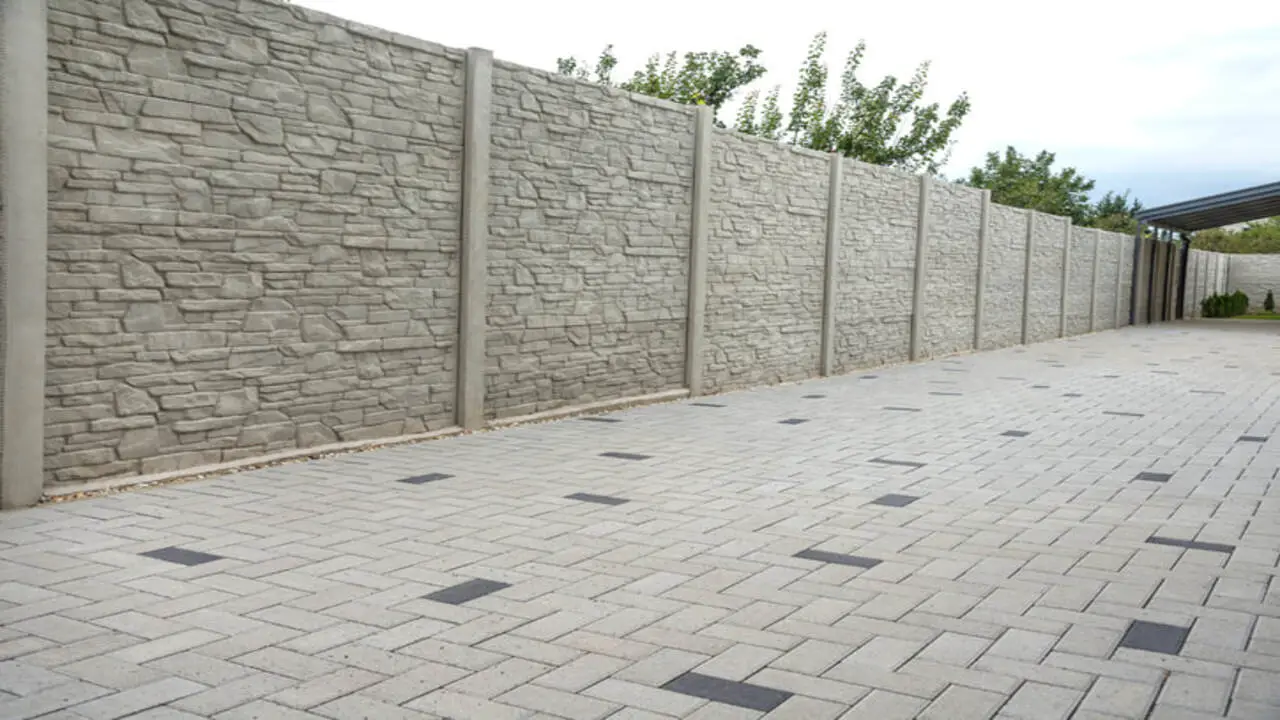Painting a cinder block wall may seem daunting, but with the right tools and techniques, it can be a rewarding project that adds new life and style to your space.
Whether you’re looking to spruce up your outdoor patio or give your interior walls a fresh coat of paint, mastering how to paint a cinder block wall is essential for achieving professional-looking results.
Here, we have compiled seven expert tips on how to paint cinder block walls that will make the process a breeze. Whether painting an interior or exterior wall, these tips will help you achieve a smooth and even finish. We will discuss everything from preparing the surface by cleaning and repairing any damage to choosing the right type of paint for cinder block walls.

7 Expert Tips On How To Paint Cinder Block Wall

Painting a cinder block wall can be a great way to spruce up the appearance of your space. Whether you are looking to add a pop of color or create a more cohesive look, painting can give your cinder block wall a fresh and updated feel. Before you start, it is important to properly prepare the surface by cleaning it thoroughly and repairing any cracks or damage. Here are 7 expert tips on how to Paint Cinder Block Walls.
1. Prepare The Surface By Cleaning And Repairing Any Damage
To ensure a successful paint job on your cinder block wall, the first step is to prepare the surface by cleaning and repairing any damage. Start by removing dirt and debris from the pores of the cement blocks. Use a putty knife and caulk to fill any cracks or holes, ensuring a smooth surface.
Use a wire brush or scraper to remove any loose paint or residue from the wall. If efflorescence is present, pressure wash the wall to remove it. Once cleaned, allow the surface to dry completely before proceeding with the painting process.
2. Use A High-Quality Primer To Ensure Proper Adhesion Of Paint
To ensure proper paint adhesion to a cinder block wall, start by applying a coat of high-quality primer. This will create a smooth and uniform surface for the paint to adhere to the porous cement. Use a masonry primer specifically designed for cinder block walls and follow the manufacturer’s instructions for drying time. If needed, apply a second coat of primer to ensure optimal coverage and adhesion.
3. Choose The Right Type Of Paint For Cinder Block Walls

When painting cinder block walls, choosing the right type of paint is essential for optimal results. For interior walls, acrylic latex paint is a popular choice due to its durability and ability to cover pores on the surface. On the other hand, elastomeric paint is recommended for exterior walls as it can withstand different weather conditions.
Waterproof paint can help prevent moisture issues if you’re painting basement walls. Opting for a paint with low volatile organic compounds (VOCs) promotes a healthier living environment. It’s always a good idea to consult a paint specialist for specific recommendations based on your project’s requirements.
4. Apply Multiple Coats Of Paint For A Smooth And Even Finish
To achieve a smooth and even finish on a cinder block wall, applying multiple coats of paint is important. Begin by evenly applying the first coat across the entire surface, using long, overlapping strokes for consistent coverage.
Allow the first coat to dry completely before applying additional coats. Ideally, two or more coats of paint should be applied for optimal results. Make sure each coat is fully dry before moving on to the next. This will ensure a beautiful and durable finish on your cinder block wall.
5. Use A Roller Or Sprayer For Larger Areas And A Brush For Corners And Edges
Regarding painting a cinder block wall, using the right tools can make all the difference. A roller or sprayer can be the most efficient option for larger areas, such as the main sections of the wall. These tools allow for quick and even paint application, saving time and effort.
However, a brush is your best bet when it comes to corners and edges. A brush allows for more precision and control, ensuring you can easily reach those tight spots. Using a roller or sprayer for larger areas and a brush for corners and edges, you can achieve a professional-looking finish on your cinder block wall.
6. Allow Sufficient Drying Time Between Coats

To ensure a successful paint job on a cinder block wall, it is important to allow sufficient drying time between coats. Follow the manufacturer’s instructions for drying time and ensure each coat fully dries before applying the next. Consider environmental factors that may affect drying time, such as humidity. Proper ventilation can help expedite the drying process, and it is best to allow for extra drying time in humid conditions.
7. Seal The Painted Surface With A Clear Coat For Added Protection
After painting a cinder block wall, it is important to seal the painted surface with a clear coat for added protection. This clear coat acts as a barrier, helping to prevent moisture and dirt from penetrating the paint and causing damage. It also adds an extra layer of durability, making the painted surface more resistant to chips and scratches.
To apply the clear coat, follow the manufacturer’s instructions on your chosen product. Be sure to use a brush or roller suitable for applying clear coats and allow sufficient drying time between coats. By sealing your painted cinder block wall with a clear coat, you can ensure your hard work lasts for years.
How Do You Make Cinder Block Walls Look Nice?
Making cinder block walls look nice can be a challenging task, but with the right techniques, it is possible to transform them into attractive features First, consider painting the wall with a high-quality masonry paint. This will give the wall a clean, uniform look and provide a durable finish. Alternatively, you can use stucco or masonry veneer to cover the blocks and add texture.
Adding plants or a living wall can also soften the look of the wall and add a natural element. Finally, consider adding decorative elements such as artwork or lighting to draw attention away from the blocks themselves. With a little creativity, cinder block walls can be transformed into a visually appealing feature in any space.
Conclusion
It is important to follow expert tips and techniques to achieve a professional and long-lasting finish when painting a cinder block wall. Properly preparing the surface, using high-quality materials, and applying multiple coats of paint can transform your cinder block wall into a visually appealing feature. Whether you are painting an interior or exterior wall, choose the right type of paint and tools for the job.
Additionally, allowing sufficient drying time between coats and sealing the painted surface with a clear coat will help protect your newly painted wall. We have provided bulk information on how to paint cinder block walls and hope our information was helpful from your perspective. With these expert tips, you can master the art of painting cinder block walls and create a beautiful and durable finish for your space.
Frequently Asked Questions
Should Cinder Block Walls Be Painted?
Cinder block walls can and should be painted to improve their appearance and protect them from moisture and weathering. Before painting, ensure the surface is clean and use a high-quality primer and paint designed for masonry surfaces.
How Do You Prepare Cinder Block Walls For Painting?
To prepare cinder block walls for painting, thoroughly clean them with a pressure washer or brush and detergent. Fill any cracks or holes with patching compound and let it dry. Prime the walls with a high-quality primer before using masonry paint designed for cinder blocks.
What Types Of Paint Can I Use On A Cinder Block Wall?
When it comes to painting a cinder block wall, there are several types of paint you can use. Latex paint is popular for its versatility, while epoxy paint offers added durability and water-resistance. For specifically designed options, masonry paint is ideal for concrete and cinder block surfaces. Consider the intended indoor or outdoor use when selecting the right type of paint.
What Is The Best Roller For Painting Cinder Block Walls?
A recommended roller for painting cinder block walls is a high-quality 1-inch nap roller. Its thick nap helps prevent paint splatter on the rough texture of cinder blocks. Look for a sturdy frame, and use a paintbrush for edges and corners.
What Are The Steps To Painting A Cinder Block Wall?
To paint a cinder block wall, thoroughly clean it with a pressure washer or scrub brush and soapy water. Allow it to dry completely before applying concrete primer. Finally, apply two coats of high-quality masonry paint for the best results.

I am passionate about tools and electric work. I love finding new tools and experimenting with them.


